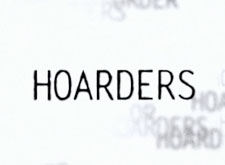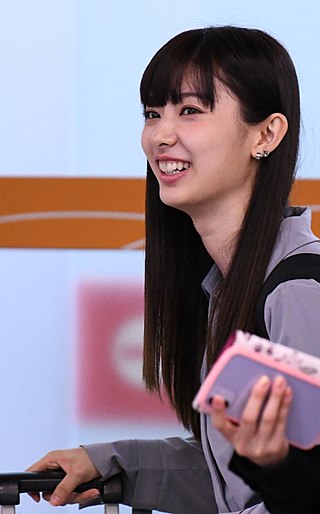
Homemaking is mainly an American and Canadian term for the management of a home, otherwise known as housework, housekeeping, housewifery or household management. It is the act of overseeing the organizational, day-to-day operations of a house or estate, and the managing of other domestic concerns. A person in charge of the homemaking, who is not employed outside the home, in the US and Canada, is called a homemaker, a term for a housewife or a househusband. Historically the role of homemaker was often assumed by women. The term "homemaker", however, may also refer to a social worker who manages a household during the incapacity of the housewife or househusband. Home health workers assume the role of homemakers when caring for elderly individuals. This includes preparing meals, giving baths, and any duties the person in need cannot perform for themselves.
Housekeeping is the management and routine support activities of running and maintaining an organized physical institution occupied or used by people, like a house, ship, hospital or factory, such as cleaning, tidying/organizing, cooking, shopping, and bill payment. These tasks may be performed by members of the household, or by persons hired for the purpose. This is a more broad role than a cleaner, who is focused only on the cleaning aspect. The term is also used to refer to the money allocated for such use. By extension, it may also refer to an office or a corporation, as well as the maintenance of computer storage systems.

5S is a workplace organization method that uses a list of five Japanese words: seiri (整理), seiton (整頓), seisō (清掃), seiketsu (清潔), and shitsuke (躾). These have been translated as 'sort', 'set in order', 'shine', 'standardize', and 'sustain'. The list describes how to organize a work space for efficiency and effectiveness by identifying and sorting the items used, maintaining the area and items, and sustaining the new organizational system. The decision-making process usually comes from a dialogue about standardization, which builds understanding among employees of how they should do the work.

JJ is a Japanese fashion and lifestyle magazine published by Kobunsha. It was established in 1975 as an extra issue of Josei Jishin, and was the first women's magazine for college students in Japan. Most readers of JJ are females between the ages of 17 and 26, and range from college students to office workers.
FlyLady is a support and self-help group that offers advice to help people with housekeeping, founded by "The FlyLady", Marla Cilley.

Hoarders is an American documentary reality television series that debuted on A&E on August 17, 2009. The show depicts the real-life struggles and treatment of people who suffer from compulsive hoarding disorder.

Geralin Thomas is an American organizing consultant. She is best known for her appearances on the television show Hoarders. She is the proprietor of the company Metropolitan Organizing, based in Cary, North Carolina.

Marie Kondo, also known as Konmari (こんまり), is a Japanese organizing consultant, author, and TV presenter.

Compulsive decluttering is a pattern of behaviourde that is characterised by an excessive desire to discard objects from one's home and living areas. The homes of compulsive declutterers are often empty. It is the opposite of compulsive hoarding.
GirlsAward 2014 Spring/Summer was a fashion and music event held on April 19, 2014, at Yoyogi National Gymnasium 1st Gymnasium in Tokyo, Japan. In this event, Dewi Sukarno, known as one of the wives of the first President of Indonesia and Japanese tarento, appeared as a secret guest. Funassyi, the mascot character of Funabashi city and Japanese cartoon character Crayon Shin-chan appeared as a run model. The main MCs are Japanese comedy duo Cocorico and Fuji Television newscaster Mio Matsumura.
"Pork and Burns" is the eleventh episode of the twenty-eighth season of the American animated television series The Simpsons, and the 607th episode of the series overall. The episode was directed by Matthew Nastuk and written by Rob LaZebnik. It aired in the United States on Fox on January 8, 2017.

Tomu Mutō is a Japanese tarento, actress, and former idol. She was a member of the idol group AKB48 under Team K. She is an alumna of Seijo University, where she studied economics and also earned her postgraduate degree, as well as a certified weather presenter, financial planner and a disaster prevention specialist.

Tidying Up with Marie Kondo is a reality television series developed for Netflix and released on January 1, 2019. The show follows Marie Kondo, a Japanese organizing consultant and creator of the KonMari method, as she visits families to help them organize and tidy their homes. Marie Iida acts as Marie Kondo's interpreter throughout the show.

Joshua Becker is an American author, writer, and philanthropist.

The COVID-19 pandemic in Japan has resulted in 33,803,572 confirmed cases of COVID-19 and 74,694 deaths, along with 33,728,878 recoveries.

The Diamond Princess is a British-registered luxury cruise ship that is operated by Princess Cruises, a holiday company based in the United States and Bermuda. In February 2020, during a cruise of the Western Pacific, cases of COVID-19 were detected on board. The vessel was quarantined off Japan for two weeks, after which all remaining passengers and crew were evacuated. Of the 3,711 people on board, 712 became infected with the virus – 567 of 2,666 passengers, and 145 of 1,045 crew. Figures for total deaths vary from early to later assessments, and because of difficulties in establishing causation. As many as 14 are reported to have died from the virus, all of them older passengers – an overall mortality rate for those infected of 2%.
Novel Coronavirus Expert Meeting is a Japanese advisory body established in the New Coronavirus Infectious Diseases Control Headquarters of the Japanese Cabinet.
Get Organized with The Home Edit is a 2020 reality television series about The Home Edit, a professional organizing company founded by Clea Shearer and Joanna Teplin. It began with The Home Edit book, followed by home organization and lifestyle products, and the streaming series.
Shūkatsu in Japanese is an abbreviation for "ending activities". It is a term that refers to various preparations and reflections for the final stages of life made with the awareness of one's inevitable mortality.
Danshari is a Japanese neologism referring to a form of systematic decluttering and optimization of the things in a home, and is composed of the words dan (refuse), sha (dispose) and ri (separate). It was coined by author Hideko Yamashita to distinguish between minimalists, and those who try to optimize their belongings.














